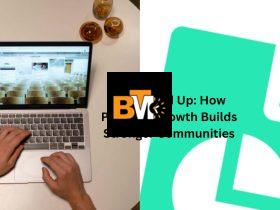Why Crowdfunding is a Game-Changer for Students
Starting a business as a student can feel impossible when you don’t have the money to make it happen. Traditional funding methods, like bank loans or venture capital, can be out of reach for young entrepreneurs who don’t have years of experience or strong financial backing. But what if there was a way to raise money for your startup without giving away ownership or taking on debt? Enter crowdfunding.
Crowdfunding allows students to turn their ideas into reality by getting support directly from people who believe in them. Instead of relying on one big investor, you raise smaller amounts from a lot of people. It’s not just about money—it’s about building a community around your idea, getting real feedback, and proving that your business has potential before it even launches.
If you’ve ever felt overwhelmed by startup costs, crowdfunding can be a solution. Just like how students sometimes look for smarter ways to handle schoolwork—whether it’s using study apps or buying a research paper to save time—crowdfunding is a smart way to get the funding you need without the traditional roadblocks. But how do you actually make it work? Let’s break it down.
Source: https://unsplash.com/photos/macbook-pro-near-white-open-book-FHnnjk1Yj7Y
Choosing the Right Crowdfunding Platform
Not all crowdfunding platforms are the same. Some focus on creative projects, while others work best for tech startups or social causes. The key is picking the one that matches your business idea. Here are some of the most popular ones:
Kickstarter
This is great for creative and product-based businesses. If you’re launching a cool gadget, an app, or even a board game, Kickstarter is a good choice. But there’s a catch—you only get the money if you reach your funding goal.
Indiegogo
Unlike Kickstarter, Indiegogo lets you keep whatever money you raise, even if you don’t reach your full goal. This makes it a good option if you’re unsure how much you can realistically raise.
GoFundMe
If your startup idea is community-based or has a social impact, GoFundMe is worth considering. It’s more about donations than business investments, so people give because they believe in your mission rather than expecting a product in return.
SeedInvest and Crowdcube
For students looking to offer equity (a small share of their company) instead of just taking donations, platforms like SeedInvest and Crowdcube allow people to invest in startups. This is closer to traditional fundraising but without needing a big investor.
Crafting a Killer Crowdfunding Campaign
Raising money isn’t just about throwing up a page and hoping people donate. A successful crowdfunding campaign takes planning, creativity, and a clear strategy. Here’s what you need to focus on:
Tell Your Story
People don’t just invest in ideas—they invest in people. Why did you start this business? What problem are you solving? Be real, be human, and make your campaign personal. A strong story helps people connect with your vision.
Set a Realistic Goal
If you set your funding goal too high, you might not reach it. If it’s too low, you won’t get enough to make your idea work. Look at similar campaigns in your niche and see how much they raised. Think about the bare minimum you need to launch, then aim slightly higher to cover unexpected costs.
Create a Great Video
A video isn’t required, but it makes a huge difference. A short, engaging video explaining your idea, showing your prototype (if you have one), and sharing your passion will get people excited. Campaigns with videos tend to raise significantly more money than those without.
Offer Exciting Rewards
Most crowdfunding platforms let you give rewards in exchange for donations. These could be early access to your product, exclusive merchandise, or even a personalized thank-you video. Make sure the rewards are worth it but don’t cost too much to produce.
The Mistakes That Can Ruin Your Crowdfunding Campaign
Crowdfunding isn’t guaranteed to succeed, and many campaigns fail. Here are some common mistakes students make (and how to avoid them):
Being Too Vague
People need to understand exactly what they’re funding. If your campaign is too broad or unclear, potential backers won’t feel confident supporting you. Be specific about what the money will be used for and how your startup will make a difference.
Ignoring Marketing
Even the best ideas won’t get funded if nobody sees them. Start promoting before your campaign even launches. Build hype on social media, get people talking, and reach out to relevant communities.
Setting Unrealistic Deadlines
People love ambitious projects, but they also expect realistic timelines. If you promise to deliver a product in three months and it takes a year, backers will be frustrated. Give yourself extra time to avoid missing deadlines.
Forgetting to Update Backers
Once people have donated, keep them in the loop. Regular updates make them feel like part of your journey and more likely to support you in the future. If something goes wrong, be honest—transparency builds trust.
Beyond Crowdfunding: What’s Next?
If your crowdfunding campaign is successful, congratulations! But what happens next? Here’s how to keep the momentum going:
Deliver on Promises
If you promised rewards, ship them out on time. If you raised money for a product launch, keep backers updated on progress. Meeting expectations builds credibility for future funding.
Reinvent Your Funding Strategy
Crowdfunding can be a one-time thing, or it can be part of a bigger strategy. Many student entrepreneurs use crowdfunding to prove demand, then seek additional funding from investors or grants.
Keep Your Community Engaged
Your backers aren’t just financial supporters—they’re potential customers, brand ambassadors, and future investors. Keep them excited about your journey, and they’ll continue supporting your business long after the campaign ends.
Final Thoughts
Crowdfunding is one of the best ways for students to turn ideas into real businesses without venture capital. It’s not just about raising money—it’s about proving your idea works, building a community, and learning how to market yourself.
If you’re serious about starting a business, crowdfunding is a powerful tool. Just make sure you plan your campaign well, tell a great story, and promote it like crazy. You don’t need a big bank account to make your startup dreams happen—just creativity, effort, and the right strategy.
So, what’s stopping you? Start brainstorming, pick a platform, and take the first step toward funding your student startup today!







Leave a Reply